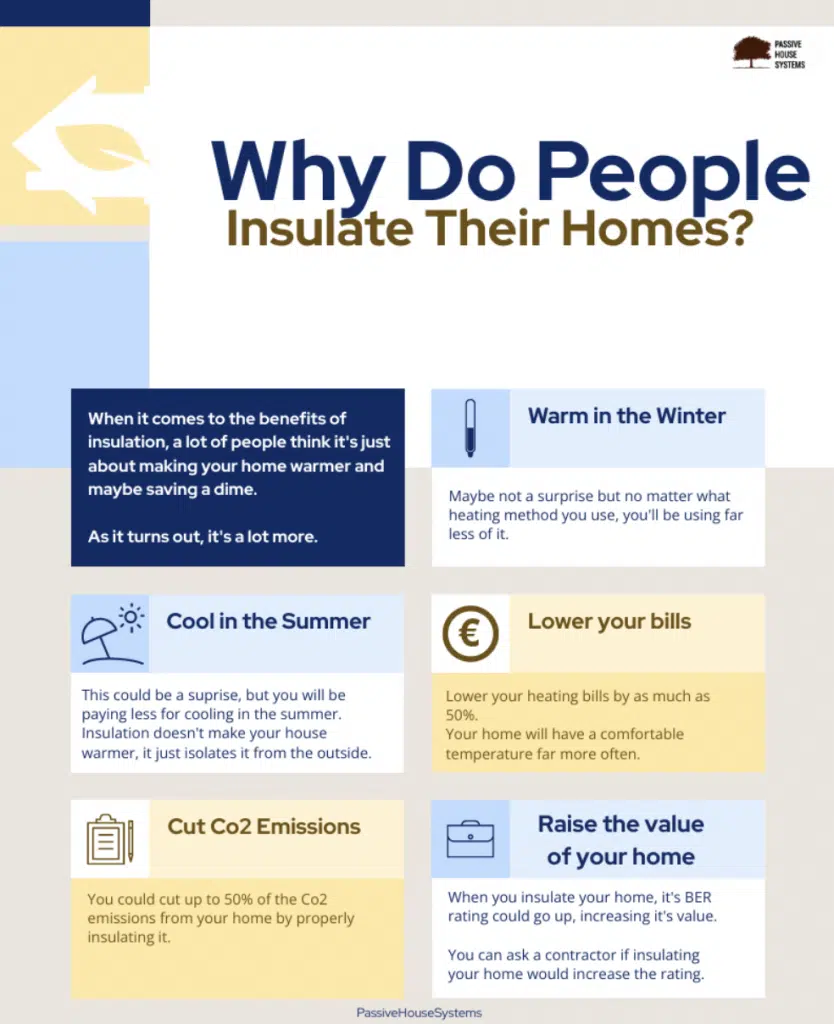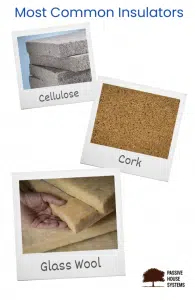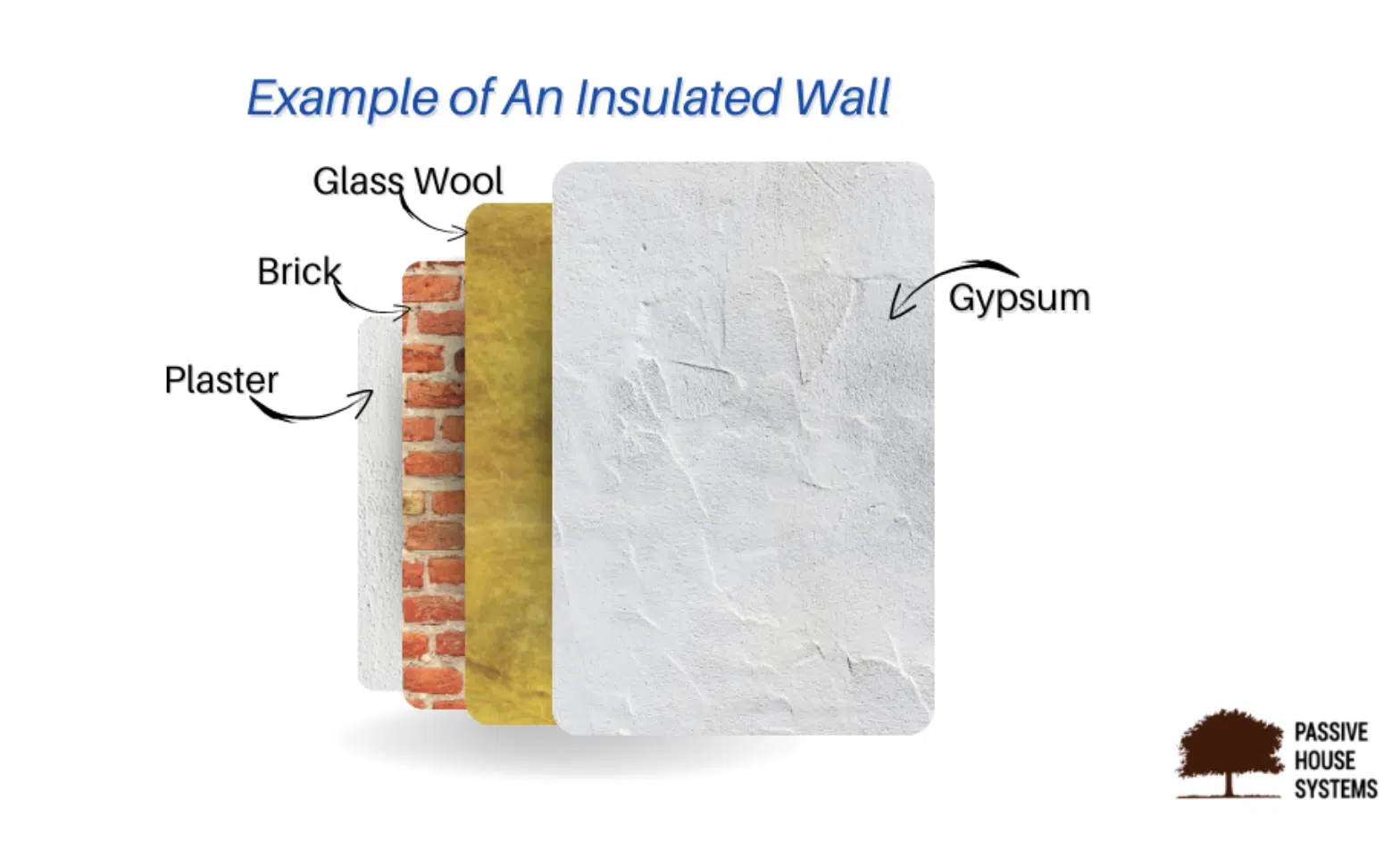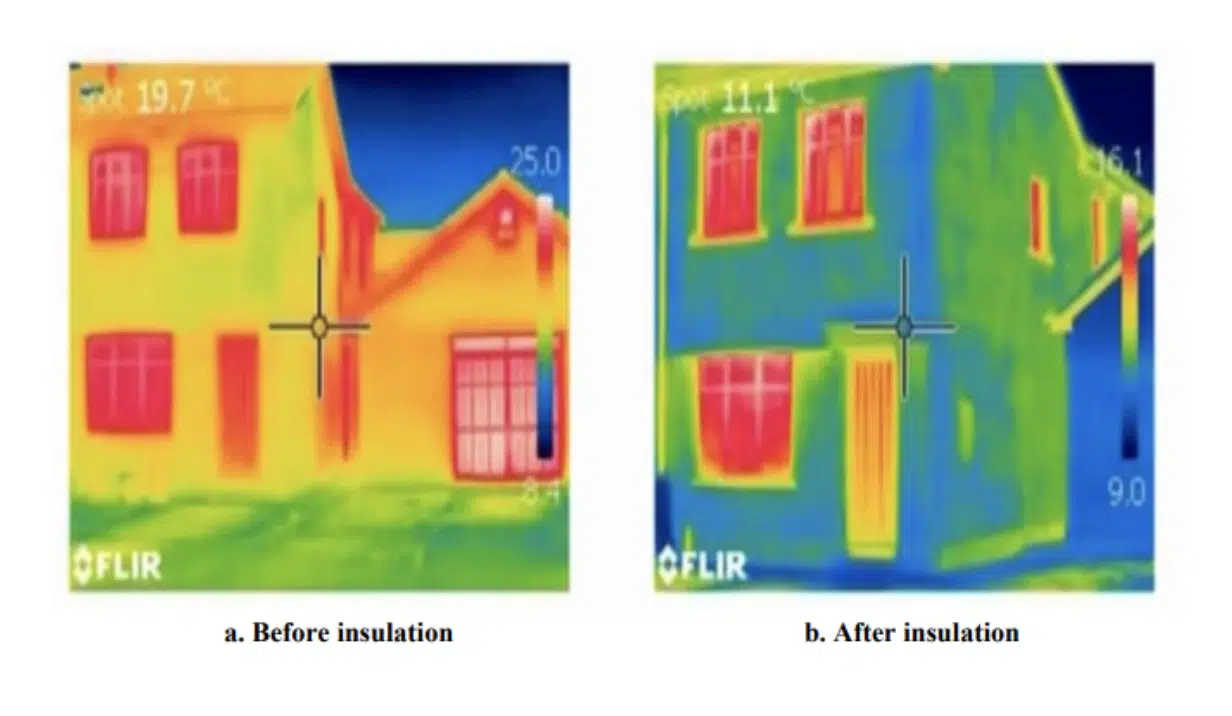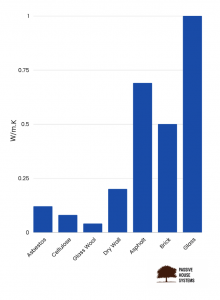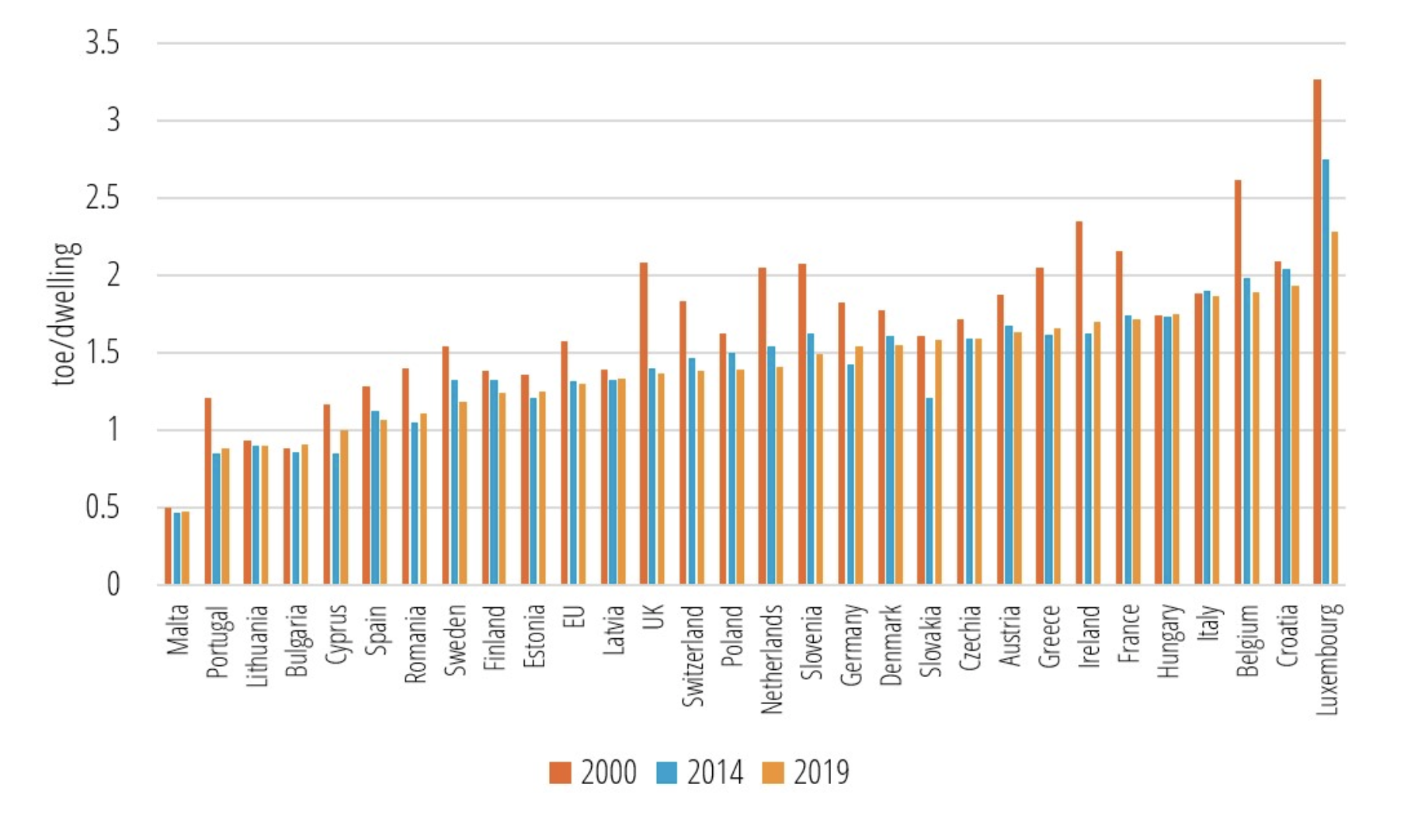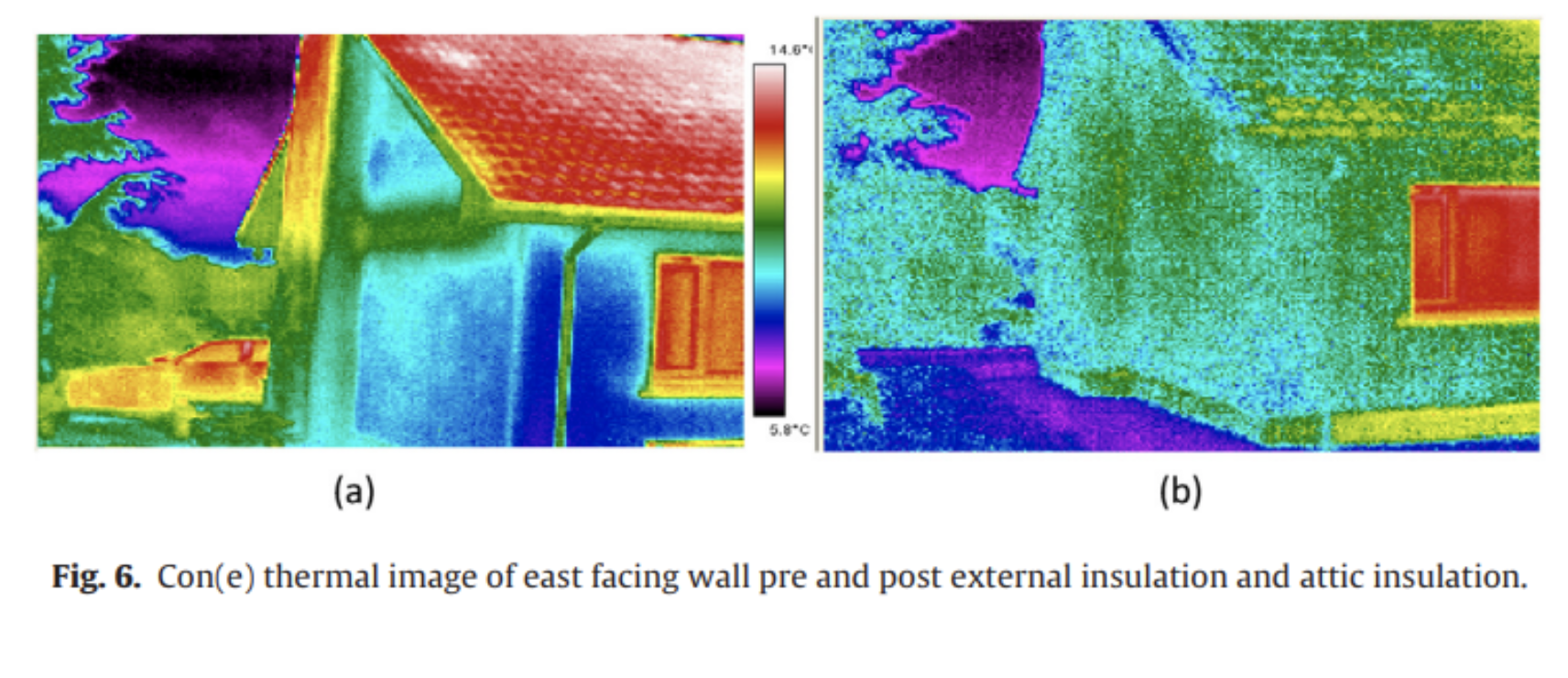In Ireland, we use insulation for a variety of functions. We insulate against sound, heat, wind and even fire. In this post we’ll outline everything you could possibly want or need to know about insulation in Ireland and the EU;
We’ll talk about what insulation is, how much money you can save by insulating your house, how to go about insulating your home and finally cover studies showing the effects of insulation. It sounds boring but it can get quite interesting, especially when you can save tens of thousand of euro by learning all this.
What’s Insulation About and Why Should We Care?
Firstly, what is insulation?
Insulation just refers to materials and construction methods that work to keep heat inside the building and isolate the home from the outside environment. Insulation in your walls, roof, and windows essentially keeps your house cool in the summer and warm in the winter.
Houses are insulated for a variety of reasons. It improves the comfort of those inside the building, lowers heating costs, and aids in the fight against climate change by lowering the building’s carbon footprint.
What are the different types of insulation, and how do they differ?
There are various materials and forms of insulation available, each of which is used for different purposes; we’ll look into which type of insulation is best suited for you.
Insulating materials are classified into three types: organic, inorganic, and metallic. They all have unique characteristics and applications. Insulators can take the form of sheets, liquids, or even small granules that are placed inside walls.
In Ireland, the most common insulation materials are:
-
Cellulose, which is a recycled paper product. It absorbs water and dust, meaning it requires a vapour membrane to protect it..
-
Glass Wool (also known under its far cooler name Fibreglass) is incredibly common for all sorts of insulation. It’s inexpensive but requires vapour barriers to protect it from moisture. It also settles overtime, so its insulation value falls overtime.
-
Cork: A type of wood used in insulation. Its naturally fire resistant and its insulation value does not decrease overtime. Cork lasts for more than 50 years and is a good noise insulator, but installation is often difficult and expensive.
There do exist other types of insulation :
Natural Fibers – Common fibers such as wool, cotton, or hemp perform poorly and are uncommon.
Plastic Fibers – Chemically reinforced and flame-resistant plastic.
Polyisocyanurate – Can be found in foam form, is extremely inexpensive, and is simple to install.
Does moisture affect insulation?
Many insulators, such as Glass Wool, fail to properly handle moisture leaking through the external shell or even from within the house itself, causing the insulator to deteriorate over time. These insulators require vapour membranes.
What are vapour membranes?
Vapour membranes are sheets of very thin plastic that keep moisture out of the house and the insulator. They allow moisture to escape while also preventing additional moisture from entering, thereby preventing long-term structural damage.
Where does insulation go/What should I insulate?
Depending on the climate, different types of insulation will go in different places, but a properly insulated house will have insulated walls – either internally or externally, an insulated roof, windows, and properly fitted doors. It is possible to insulate your floor, but it is usually not as important as proper wall and roof insulation.
Here’s an example of what an insulated wall is made up of.
It appears to be a lot of work just to regulate temperature, but there’s a reason insulation is required in new construction. It saves tens of thousands of euros over the life of a building, improves comfort, and drastically reduces emissions. In this example, removing the Glass Wool segment from the wall would result in 61% more heat loss through this wall!
Below you can see the huge difference between an insulated and a poorly insulated home.
What’s a ‘K’ Value/How is insulation measured?
The value of insulation, which is what we’ve been calling it, is actually measured in Watts per meter per degree, or a “K” value. It just measures how well a material keeps the building safe from the outside world. Here, we have a handy graph that lets us compare and contrast different insulators:
But that’s not all there is to know about insulators. Again, we have to keep in mind that not all of these materials are made the same and that safety, ease of use, and cost have to be taken into account.
Even though Glass Wool/Fiber Glass is inexpensive and a good insulator, it needs a vapour barrier on top to control moisture.
Despite the fact that asbestos insulation has been phased out due to the grave danger it poses to human health, it is often still present in older structures.
The shape in which an insulator is used is another factor that can modify its insulating properties. The insulation’s properties, applications, and insulating efficacy can be affected by the insulation’s shape, form and thickness. This is why it’s crucial to apply insulation correctly.
Forms of Insulation :
Loose-Fill and Blown-In Insulation
Small fibers, foam, or granules of various materials are injected into the wall. Cellulose and Glass Wool/Fiber Glass are the most common alternatives. This is the simplest and most cost-effective approach to insulating your walls, and it works wonderfully for retrofits. As the injection will conform to the wall, no dismantling is required.
How much value you get for your money in this case is determined by factors such as the density of the insulation injected and the wall structure on top of the materials used. There’s no reason insulation can’t be simple (sometimes).
Blankets, batts and rolls
The majority of homes use this type of insulation. Glass wool, fiber glass, or plastic fiber rolls are inserted between the studs and stud bays of a home’s walls to provide insulation. These are versatile enough to be used on the walls, floors, and ceilings of your home.
You can further improve the quality of your insulation and the comfort of your home by also installing airtight vapour membranes.
Foam Boards
Rigid foam planes can be applied and covered with plaster or other fire-resistant materials for use within the home’s structural framework. Polystyrene is a common material for these boards. They’re great for places where there isn’t a lot of room for bulkier insulation materials due to their thin profile and high insulation density.
Sprayed-Foam and Foamed-In-Place Insulation
You can spray foam into walls, ceiling surfaces and even under floors. Filling cavities and cracks and preventing air leakage is possible with a little bit of prep work, but it may not always work for preexisting structures.
These are the 4 most popular methods for residential properties, but commercial builds can use different methods and DIY projects like sheds, greenhouses or other structures might use methods like reflective foils. The United States department of Energy has created a detailed list of different types of insulation forms. All this applies to European countries, Ireland and the UK with a difference in regulation and occasionally materials.
Regulations
Many countries, particularly in Europe, have mandated minimum insulation requirements for new construction and strongly recommended that existing buildings upgrade their insulation to meet these standards.
Compare the kilowatt-hour (kw/h) consumption norms of each EU member state below.
Energy consumption per dwelling, scaled to the EU average climate.
Source : Residential buildings: Energy Efficiency & Consumption evolution in Europe (enerdata.net)
There has been a significant drop in heating consumption since the year 2000, with Ireland experiencing one of the largest drops.
The EU has a voluntary program for insulation standards, and countries like Ireland, Germany, and Belgium have all passed their own insulation and energy consumption standards for new builds
This is also why the Irish goverment will offer you a grant to upgrade your homes insulation. Note, you can’t upgrade your own house you need to use a approved contractor!
The insulation standards in Ireland are stringent, requiring airtightness and a high standard of insulation, and the standards in the UK are similar. Countries like Italy or Poland have a far lower requirement for insulation.
Insulating Your Home
Does insulation Save You Money?
Since insulation prevents heat from escaping or entering, it lowers heating and cooling costs year-round and can save hundreds or even thousands of dollars depending on where you live. Most houses lose heat through the walls (20%-30%) and the attic (30%).
How do I know if my home is insulated?
There’s a couple easy way to tell if your home is poorly insulated.
-
Temperature swings throughout the day and from room to room. Even
temperature distribution throughout the day and between rooms is a sign of a well-
insulated home.
-
Insulation may be necessary if your energy bills are consistently higher than the national average. There is an increase in rates in 2022, so plan accordingly. See if you’re paying too much by comparing your bills with others in the table below.
-
If you feel the chill when you’re inside your home. Particularly if your walls are damp and cold to the touch. The insulation in your home is probably subpar.
Do keep in mind a few things, as of May 1st Vat on electricity has decreased to 9% from 13.5%. One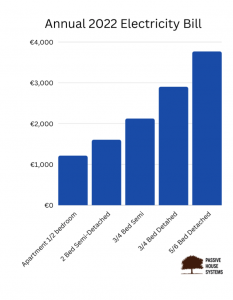
For more information regarding the prices on electricity, your yearly bills and the source for our graph you can see this guide : How Much is the Average Electricity Bill in Ireland ? – Money Guide Ireland.
How would an Irish home owner insulate their house and start saving money?
We lose most of the heat in the house through the walls and attic. So let’s tackle those first.
How should you insulate your walls?
There are 3 different types of walls :
-
Cavity Walls
-
Solid Walls
-
Hollow Walls
A homeowner should be able to distinguish between a hollow wall and a solid wall. There are both walls you can knock on and drill shelves into, and those you can’t. An authorised contractor’s opinion is required before proceeding with any work to determine whether the ventilation in your home will meet the requirements of this.
In terms of how you can improve your home’s insulation. There are 3 ways. Internal, Cavity and External insulation.
-
External Wall – It’s the best way to insulate your home. It involves placing polystyrene slabs with a steel or fiberglass mesh on the exterior of your house. It’s expensive and requires a lot of work but ensures an insulated house.
-
Cavity Wall – This only applies to cavity walls, you inject material into the space between the bricks or slabs. It’s an inexpensive way to insulate your home.
-
Internal Wall – This process entails adding new layers to the inside of your home’s walls. Kitchen appliances may need to be reinstalled after insulation boards, vapor membranes, and plasterboard are installed.
Should you do it yourself?
You can’t really DIY most wall insulations, it’s far better to do it professionally. Reach out to a qualified contractor, remember about the SEAI grant!
The SEAI has a long list of recommend questions about the job and products used on page 2 of this document.
You can verify contractors here : SEAI BEH – Contractor Search
How to insulate your attic?
Most heat loss in Irish homes occurs in the attic, and this can occur even if the attic is insulated. Possibly there isn’t enough of it, or it’s been damaged.
Even though roof insulation is much easier and more do-it-yourself friendly than wall insulation, in order to apply for the SEAI grant, it must be done to a specific standard and require certain products, so having a contractor do it is probably more cost and time effective.
The most common materials are semi-rigid boards and fibreglass, make sure to get some rubber gloves! The quality of the products is critical, as the material determines the longevity and quality of the insulation.
Just as in the last section, the SEAI has a detailed document with questions about products and questions to contractors.
You can verify contractors here : SEAI BEH – Contractor Search
Finally let’s look at some case studies of insulation in action. Technological University Dublin conducted a study where they looked at multiple houses which had either cavity or external wall insulation using the SEAI grant.
The results are quite interesting and show a far clearer picture, especially if you are considering the grant!
The cavity filling technique reduced the amount of heat loss by anywhere between 21% and 66%. As was to be expected, we can observe this increase by a significant margin with external insulation with a range that falls somewhere between 37% and 77%.
How do I know if my home is insulated?
The amount of time that the occupants spent with the heater on dropped by half, resulting in pretty comprehensive savings.
